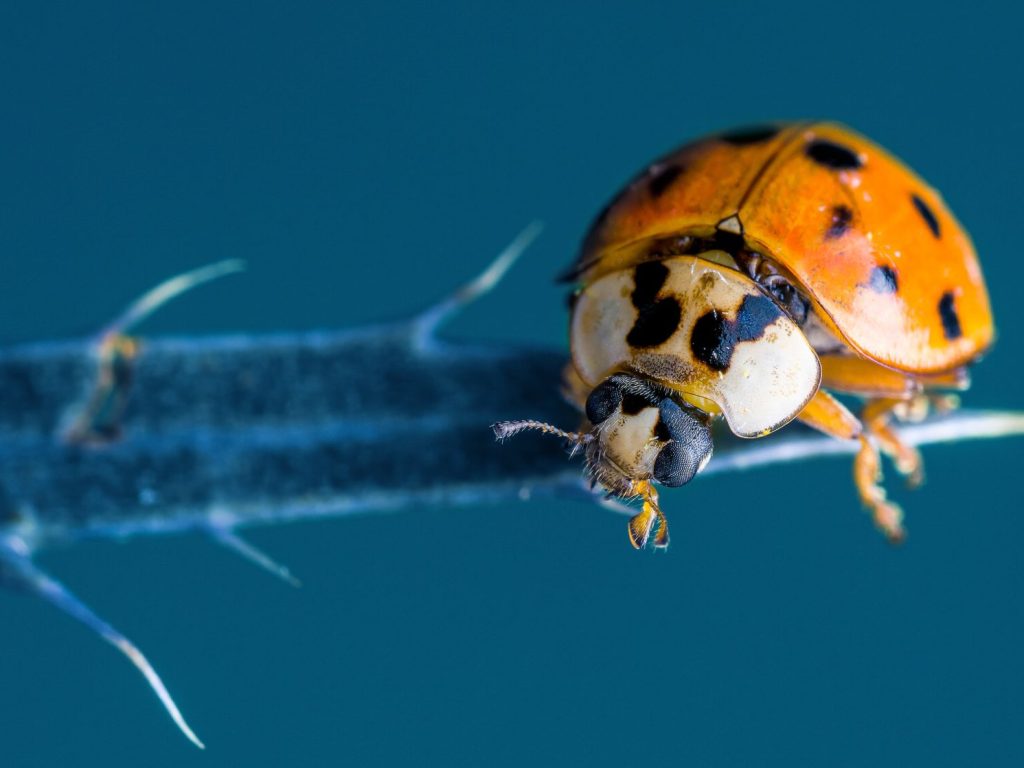Different from the ordinary types
Posted on October 7, 2022 by Ronald McGregor
Many have seen a staggering number of ladybugs invading their homes lately. But they don’t look like the Ladybug of Canada. There’s no doubt it’s the pretty serious return of the Asian ladybug.

The Asian ladybug reproducing in Quebec this fall. (Picture Pexels)
You should know that the ladybug from Canada or Asia is only useful. The Asian variant first flew in North America in the 1970s and was introduced to control aphids and other pests.
“Its rapid reproductive cycle and ability to withstand fairly harsh winters has allowed it to become one of the predominant species in Canada. It is slightly larger than the native species, measuring between 6 and 10mm in length. Its color varies from mustard yellow to a dark red-orange. This ladybug can have varying numbers of black spots on its elytra, or even none, as we learn on Health Canada’s site. The Asian ladybug can usually be identified by two oval, white spots on either side of the head and an M-shaped mark just behind the head. Like many other insects, its bright colors are a deterrent, warning birds and other predators that it doesn’t taste good. »
A hole will do
The common ladybug turns out to be a voracious predator against harmful insects. It feeds on more than 50 species of aphids and can consume thousands of these insects over its lifetime. It thus protects gardens, crops and orchards. It does not transmit diseases and does not bite. Only 3 of the 450 species of ladybugs in North America (Mexico, USA and Canada) feed on plants.
On the other hand, its Asian cousin gathers in large numbers in autumn, like the others, to find a dry place to overwinter. Sun-exposed houses and buildings are in demand. ” […] They collect on the outer walls and penetrate the interior through cracks and openings. Their large numbers pose a significant nuisance to some owners. Homes near a field or forest are particularly targeted,” Health Canada said.
After entering a home through a crack in a door or window frame, eaves, utility lines, foundations, and siding, the ladybug becomes disoriented. Then it places itself on walls, ceilings and windows, where it looks for a way out …
“Most ladybugs that lingered this way will soon die, but those that survive might find a safe place to hibernate, such as B. the attic or empty spaces in the walls by occasionally coming out in mild weather. A larger infestation can be expected for several days in late winter or early spring as the ladybugs leave their homes and try to breed.”
get rid of it
There aren’t 100 ways to get rid of ladybugs, ordinary or Asian. Quite simply, they should not enter your house or your favorite buildings. It is therefore advisable to have professional caulking and caulking applied, making sure “that the sunny and south-west facing facades of your home are much less affected. After that, after their departure, vacuum thoroughly and put the dust in a hermetically sealed bag that you throw in the black bin.
Note that no pesticide is approved to get rid of ladybugs. The Asian ladybug is on the list of alien species of or potential concern.
Post Views:
258
See more: News
192
Quad drivers fined by the police
Posted on October 6, 2022
0
On October 4th, police officers from the MRC Antoine Labelle station conducted several operations using all-terrain vehicles…
98
The MRC advocates destruction and reconstruction
Posted on October 6, 2022
0
The scenario of the destruction of the Mont-Laurier station is taking shape a little more, while the MRC d’Antoine-Labelle…
225
Fruit trees for the residents of Mont-Laurier
Posted on October 6, 2022
0
On the morning of October 5th, 6th grade elementary school students planted fruit trees along the path…

Award-winning entrepreneur. Baconaholic. Food advocate. Wannabe beer maven. Twitter ninja.









